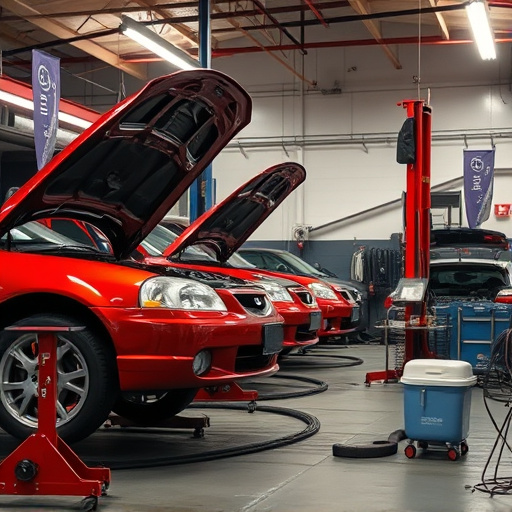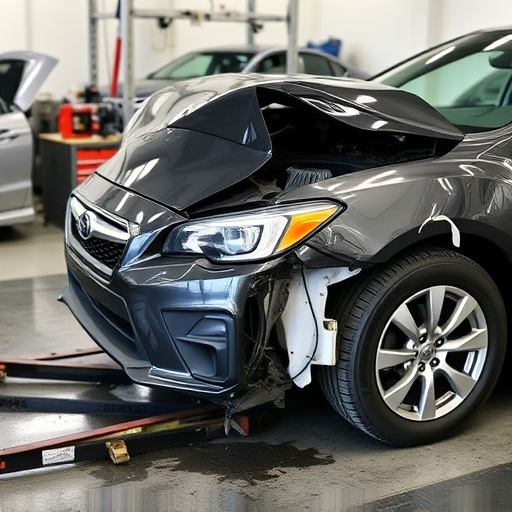Category: trim restoration collision
Trim Restoration Collision: A Comprehensive Analysis
Introduction
In the ever-evolving landscape of urban development, trim restoration collision represents a unique and complex phenomenon—a harmonious blend of architectural preservation, cultural heritage, and modern city planning. This article aims to delve into the intricate world of trim restoration collision, exploring its definition, global impact, economic implications, technological innovations, policy frameworks, challenges, and future prospects. By examining these aspects, we will uncover the significance of this concept in shaping sustainable and culturally rich urban environments.
Understanding Trim Restoration Collision
Definition and Core Components
Trim restoration collision, at its essence, refers to the meticulous process of restoring and preserving historical building facades while integrating modern architectural elements seamlessly. It involves the careful collaboration between architects, conservators, and urban planners to revive the aesthetic beauty and structural integrity of heritage structures without compromising their original character. The core components include:
- Facade Restoration: Replicating or repairing the original decorative details, such as moldings, cornices, and balconies, to restore the facade’s visual appeal.
- Structural Integration: Ensuring that contemporary modifications, like adding new floors or transforming spaces, are structurally sound and in harmony with the existing building.
- Cultural Preservation: Maintaining the building’s historical significance by adhering to conservation guidelines and preserving irreplaceable artifacts or architectural features.
- Modern Functionality: Incorporating sustainable design principles, improved insulation, and state-of-the-art technology while respecting the building’s heritage.
Historical Context
The concept of trim restoration collision has evolved over centuries, reflecting changing architectural trends and societal values. Historically, many cities faced a dilemma between preserving their cultural heritage and accommodating modern urban growth. In the late 20th century, a growing awareness of historical conservation led to the emergence of innovative approaches to integrate old and new. This shift marked the beginning of trim restoration collision as a specialized field, gaining prominence in urban renewal projects worldwide.
Global Impact and Trends
International Influence
Trim restoration collision has left its mark on numerous cities across the globe, each adopting unique strategies to balance heritage preservation with contemporary development:
- Europe: Cities like Paris, Berlin, and Vienna have mastered the art of trim restoration collision, integrating modern amenities while preserving their iconic architectural landmarks. For instance, the renovation of Berlin’s historic city center involved restoring medieval buildings and incorporating contemporary uses, creating a vibrant cultural hub.
- North America: New York City’s High Line project is a renowned example, transforming an abandoned railway into a public park while respecting the surrounding architecture. Similarly, Chicago has embraced facade restoration in its downtown area, revitalizing historical structures for mixed-use developments.
- Asia: Tokyo’s historic Asakusa district showcases the preservation of traditional wooden structures alongside modern retail and residential buildings. In Beijing, the reconstruction of the Summer Palace combines ancient design elements with contemporary landscaping.
Key Trends Shaping the Trajectory
Several trends are shaping the global landscape of trim restoration collision:
- Sustainability: There is a growing emphasis on integrating green building practices into heritage restorations, improving energy efficiency and reducing environmental impact.
- Community Engagement: Involving local communities in decision-making processes ensures that restoration projects align with neighborhood needs and cultural values.
- Technological Integration: Advancements in 3D modeling, virtual reality, and robotic construction techniques are revolutionizing the way heritage structures are restored and documented.
- Cultural Tourism: Restored historical buildings often become focal points for cultural tourism, boosting local economies and raising awareness about architectural heritage.
Economic Considerations
Market Dynamics
The trim restoration collision market is dynamic and diverse, driven by factors such as government initiatives, private investments, and the increasing demand for sustainable urban development:
- Government Funding: Many countries offer incentives and grants to encourage heritage conservation, fueling investment in trim restoration collision projects.
- Private Sector Engagement: Real estate developers often partner with specialists in historical preservation, leading to lucrative opportunities for both parties.
- Tourism Industry: Restored historic sites attract tourists, contributing significantly to local economies, especially in cultural hotspots.
Investment Patterns
Investment patterns in trim restoration collision vary across regions:
| Region | Typical Investors | Investment Focus |
|---|---|---|
| Europe | Private Equity Firms, Real Estate Developers | Historic City Centers, Heritage Sites |
| North America | Institutional Investors, Family Offices | Adaptive Reuse Projects, Downtown Revitalization |
| Asia | State-Owned Enterprises, Private Developers | Cultural Districts, Historical Neighborhoods |
Economic System Integration
Trim restoration collision plays a pivotal role in economic systems by:
- Job Creation: Restoration projects generate employment opportunities in construction, architecture, and conservation fields.
- Property Value Enhancement: Restored historical buildings often command premium prices, increasing local property values.
- Long-term Sustainability: Successful trim restoration collision initiatives contribute to the long-term viability of urban areas, attracting businesses and fostering economic growth.
Technological Advancements
Innovations in Restoration Techniques
Technological advancements have revolutionized trim restoration collision:
- 3D Modeling and Scanning: High-resolution laser scanning and 3D modeling enable precise documentation of historical structures, aiding in restoration planning and quality control.
- Robotic Construction: Robotic systems can perform repetitive tasks with high accuracy, such as cleaning facades or applying specialized coatings.
- Virtual Reality (VR) and Augmented Reality (AR): VR and AR technologies offer immersive experiences for clients and stakeholders, allowing them to visualize restoration proposals in 3D.
- Sustainable Materials: New eco-friendly materials and construction methods are being explored, reducing the environmental footprint of restoration projects.
Impact on Project Efficiency and Quality
Technological innovations have brought about significant improvements:
- Reduced Time and Costs: Advanced tools streamline project management, design, and construction processes, leading to cost savings and faster completion times.
- Enhanced Accuracy: 3D modeling ensures precise measurements and alignments, resulting in higher restoration quality and structural integrity.
- Preservation of Intangible Heritage: Digital documentation captures historical knowledge and craftsmanship techniques, ensuring their preservation for future generations.
- Community Engagement: VR experiences can involve local communities in the restoration process, fostering a sense of ownership and cultural pride.
Policy and Regulation
Governance and Legislative Frameworks
The legal landscape surrounding trim restoration collision varies across jurisdictions but generally involves a combination of federal, state/provincial, and local regulations:
- Heritage Conservation Acts: Many countries have enacted laws to protect historical buildings and districts, providing guidelines for restoration and preservation.
- Building Codes: Local building codes dictate structural integrity, safety standards, and permit requirements for renovation projects.
- Environmental Regulations: Environmental impact assessments may be mandatory for large-scale restoration projects to ensure ecological sustainability.
- Cultural Heritage Policies: Government policies often encourage the involvement of cultural heritage experts in project planning and execution.
Influence on Development
Policies and regulations significantly shape the trim restoration collision industry:
- Preservation Priorities: Governments set preservation priorities, determining which sites or districts warrant the most protection and resources.
- Funding Opportunities: Incentives and grants are offered to developers and organizations that prioritize heritage conservation, fostering collaboration.
- Community Participation: Regulations may require public consultations and community input during restoration projects to ensure local acceptance.
- Standardization of Practices: Building codes and guidelines establish industry standards, ensuring the quality and safety of restoration work.
Challenges and Criticisms
Overcoming Obstacles
Despite its numerous benefits, trim restoration collision faces several challenges:
- Funding Shortages: Restoring historical buildings can be expensive, often requiring substantial financial resources that may not always be available.
- Regulatory Burdens: Complex permitting processes and diverse regulatory bodies can slow down projects, increasing costs.
- Public Perception: Misconceptions about the costs and benefits of restoration may hinder public support for such initiatives.
- Skilled Workforce Scarcity: Finding skilled craftsmen and conservators with specialized knowledge is a growing challenge.
Proposed Solutions and Strategies:
- Public-Private Partnerships (PPPs): Collaborating with private investors can help alleviate funding constraints while ensuring sustainable development practices.
- Streamlined Permitting Processes: Simplifying regulatory procedures can expedite project timelines, reducing overall costs.
- Community Engagement Programs: Educating the public about the value of heritage conservation through workshops and events fosters support for restoration projects.
- Skill Development Initiatives: Governments and industry bodies should invest in training programs to address the skilled workforce shortage.
- Incentivizing Sustainable Practices: Offering tax benefits or grants for eco-friendly restoration methods encourages the adoption of sustainable technologies.
Case Studies: Successful Applications
1. The Revival of Paris’ Le Marais District
Le Marais, a historic district in Paris, underwent a remarkable transformation in the late 20th century. The area, known for its medieval architecture and vibrant cultural scene, faced severe deterioration due to neglect and modernization attempts. A comprehensive restoration initiative was launched, focusing on facade rehabilitation and modern integration:
- Key Strategies: Selective demolition of unsalvageable structures, detailed historical research, and meticulous restoration techniques were employed. Modern apartments and retail spaces were incorporated while preserving the district’s unique character.
- Outcomes: Le Marais has become a cultural hub, attracting tourists and fostering a thriving local community. The project successfully balanced heritage preservation with contemporary urban living.
2. Adaptive Reuse of Chicago’s City Hall
Chicago’s City Hall, constructed in the late 19th century, was facing decline when a restoration project was proposed. The challenge was to adapt the building for modern government needs while preserving its historic value:
- Approach: The renovation involved careful facade restoration, including the replication of original decorative elements. Interior spaces were reconfigured for contemporary offices and meeting rooms, maintaining the building’s grand scale.
- Results: The restored City Hall has become a symbol of Chicago’s rich history and modern governance. The project won numerous awards for its successful integration of old and new.
3. Tokyo’s Asakusa District: Tradition Meets Modernity
The historic Asakusa district in Tokyo is renowned for its traditional wooden structures and vibrant cultural atmosphere. A recent restoration initiative aimed to preserve the area’s unique character while accommodating modern developments:
- Restoration Techniques: Traditional Japanese carpentry techniques were employed to restore the ornate facades of ancient temples and shops. New buildings incorporated subtle design elements inspired by the district’s heritage.
- Community Impact: The project involved local businesses and residents, ensuring that the restoration aligned with their aspirations. Asakusa has since become a top tourist destination, contributing to Tokyo’s cultural allure.
Future Prospects
Emerging Trends and Growth Areas:
- Smart Heritage Conservation: Integrating Internet of Things (IoT) technology for monitoring building conditions in real-time, enabling proactive maintenance.
- Digital Twin Technology: Creating digital replicas of historical structures for virtual restoration simulations and future reference.
- Green Restoration: Emphasizing sustainable practices, including the use of eco-friendly materials and energy-efficient design, to reduce environmental impact.
- Community-Driven Initiatives: Encouraging community ownership and involvement in restoration projects to foster a sense of cultural identity.
Strategic Considerations:
- Sustainable Urban Planning: Trim restoration collision should be seamlessly integrated into urban master plans, ensuring that heritage preservation is not an isolated effort.
- Data-driven Decision Making: Utilizing advanced analytics and historical data to inform restoration strategies, optimize resources, and predict maintenance needs.
- International Collaboration: Sharing best practices and knowledge globally can lead to innovative solutions and cross-cultural learning.
- Education and Awareness: Ongoing public education initiatives are crucial for building support and understanding the long-term benefits of trim restoration collision.
Conclusion
Trim restoration collision is a dynamic field that seamlessly blends history, architecture, and urban planning. Its global impact is evident in the transformation of cities worldwide, where heritage preservation and modern development coexist harmoniously. This article has explored various aspects, from defining core components to analyzing economic considerations, technological advancements, and policy frameworks. By addressing challenges and highlighting successful case studies, we have underscored the significance of trim restoration collision in creating sustainable and culturally rich urban environments.
As cities continue to evolve, the demand for innovative approaches to heritage conservation will remain strong. Trim restoration collision, with its ability to balance tradition and modernity, will undoubtedly play a pivotal role in shaping the urban landscapes of tomorrow. The future prospects suggest a bright path forward, with emerging trends and strategic considerations paving the way for even greater achievements in this specialized field.
FAQ Section
Q: How does trim restoration collision differ from regular building renovation?
A: Trim restoration collision is distinct as it focuses on preserving historical facades while integrating modern elements. It requires extensive research, meticulous craftsmanship, and adherence to conservation guidelines, ensuring that the restored structure maintains its original character and aesthetic appeal.
Q: What are some common challenges faced during trim restoration collision projects?
A: Challenges include funding shortages, complex regulatory processes, public perception issues, and finding skilled craftsmen. However, these can be addressed through strategic planning, community engagement, and industry partnerships.
Q: Can you provide examples of sustainable materials used in trim restoration collision?
A: Yes, various eco-friendly materials are employed, such as recycled metal for roofing, energy-efficient insulation, and sustainable wood alternatives for structural elements. These materials reduce the environmental impact while maintaining historical integrity.
Q: How does technology enhance the efficiency of restoration projects?
A: Technology offers numerous advantages, including 3D modeling for precise planning, robotic systems for repetitive tasks, and VR/AR for immersive client experiences. These innovations streamline processes, improve accuracy, and reduce overall project costs.
Q: Are there any international agreements related to trim restoration collision?
A: While not specific to this field, various international conventions and treaties address cultural heritage conservation, such as the UNESCO Convention on the Protection of Cultural Property in the Event of Armed Conflict. These provide a framework for protecting historical sites during times of conflict or emergency.
Trim Restoration Collision: Shaping Vehicle Brand Perception

A trim restoration collision is a critical aspect of vehicle repair that significantly influences br…….
Trim Restoration Collision: Key to Post-Crash Recovery Aesthetics

Trim restoration collision services specialize in repairing and restoring damaged interior component…….
Trim Restoration Collision: Strengthening Customer Bonds Today

Trim restoration collision services meticulously repair and replace vehicle interiors, enhancing aes…….
Mastering Trim Restoration Collision Communication for Staff

Trim restoration collision is a critical service in the automotive industry, offering interior repai…….
Mastering Trim Restoration Collision for OEM Excellence

Trim restoration collision services expertly repair and refinish automotive interiors to OEM standar…….
Navigating Trim Restoration Collisions: Insurance Claims Strategies

Trim restoration collisions refer to minor exterior damage to vehicles, impacting appearance and val…….
Training Staff: Master Trim Restoration Collision Techniques

Trim restoration collision techniques are essential for restoring vehicles to pre-incident condition…….
Training Teams for Trim Restoration Collision Excellence

Trim restoration collisions in automotive repair refer to exterior trim damage caused by impact. Eff…….
Trim Restoration Collision: Preserving Vehicle Authenticity Step-by-Step

Trim restoration collision goes beyond standard auto repair by meticulously revitalizing a vehicle&#…….








